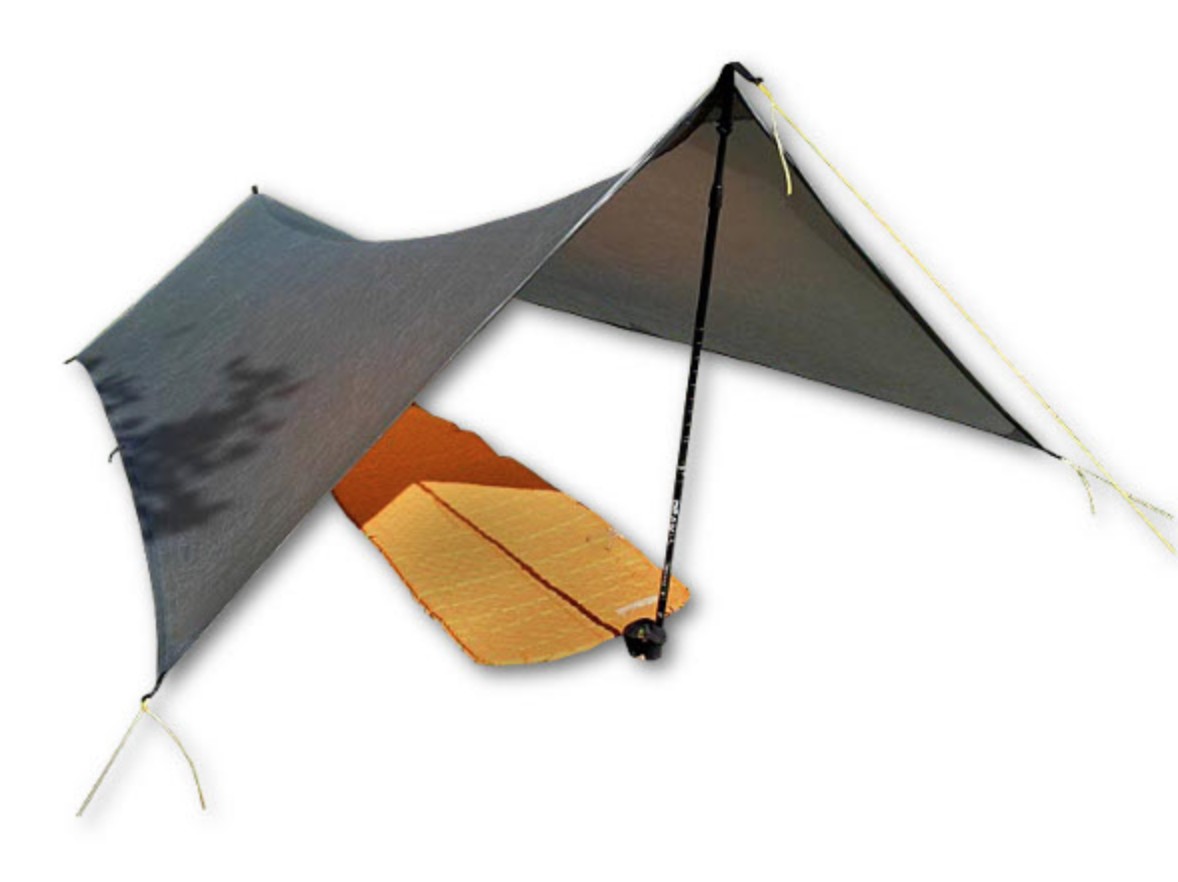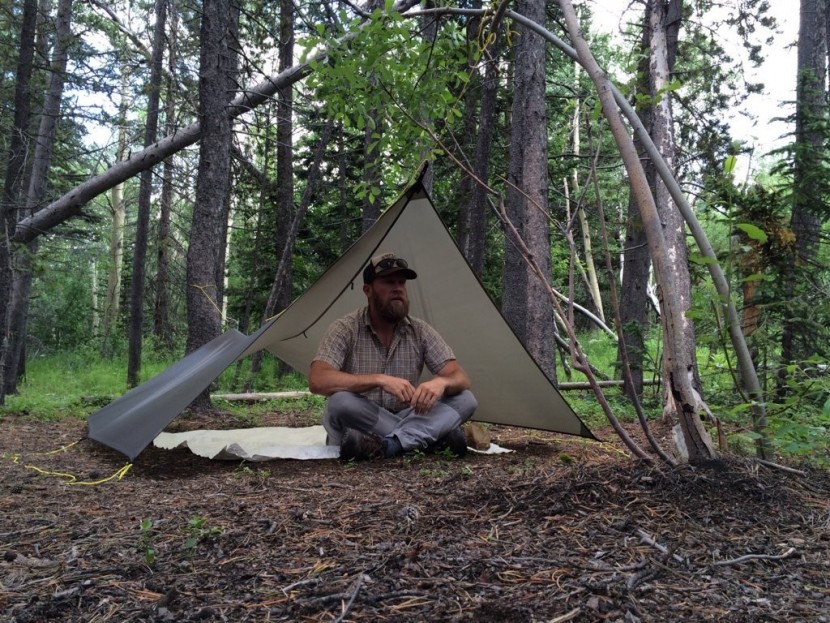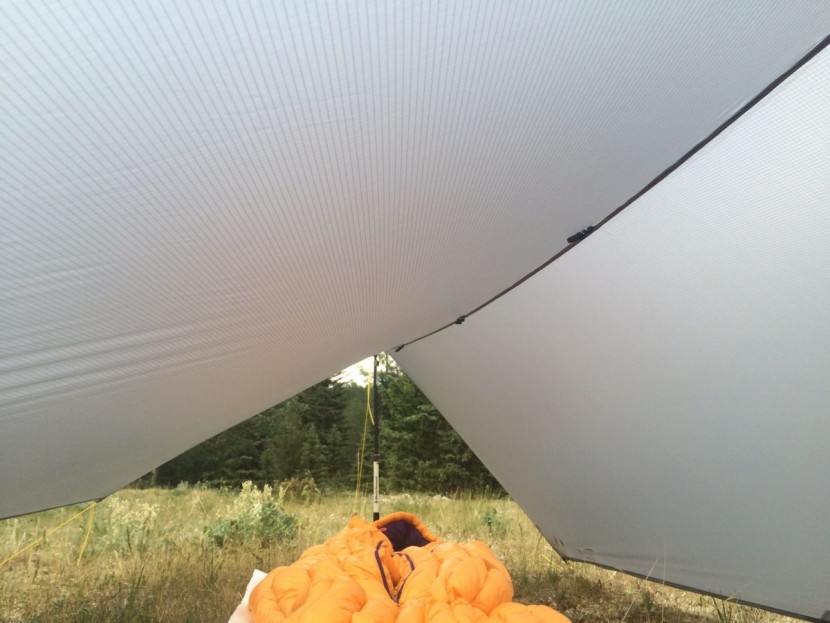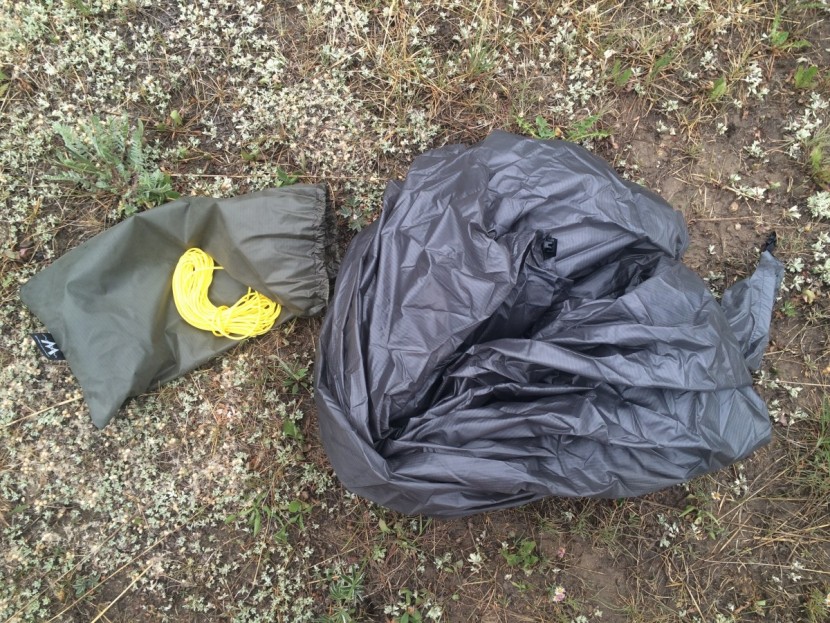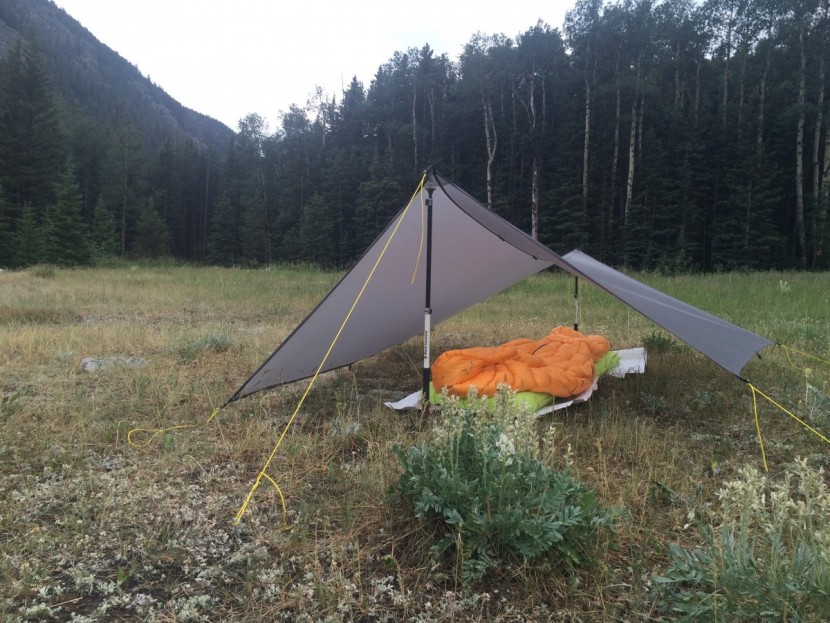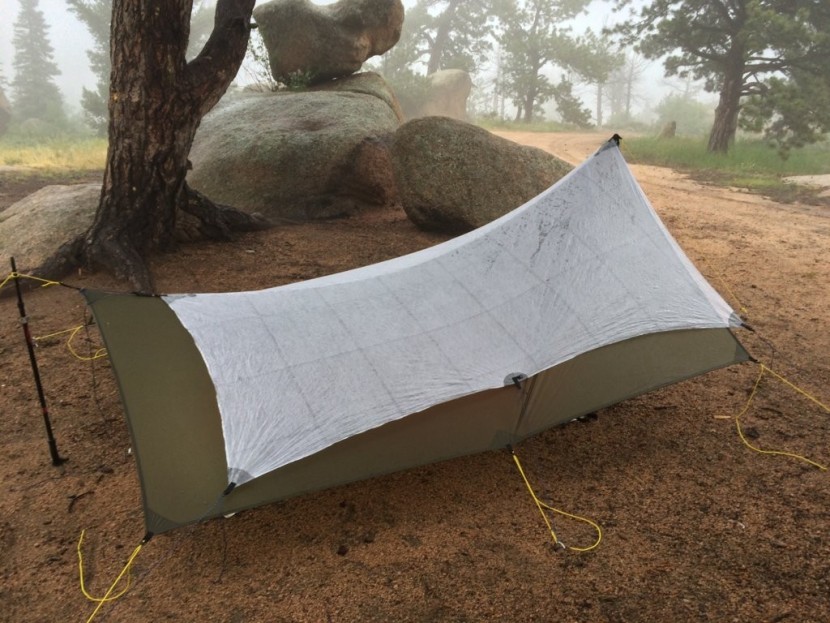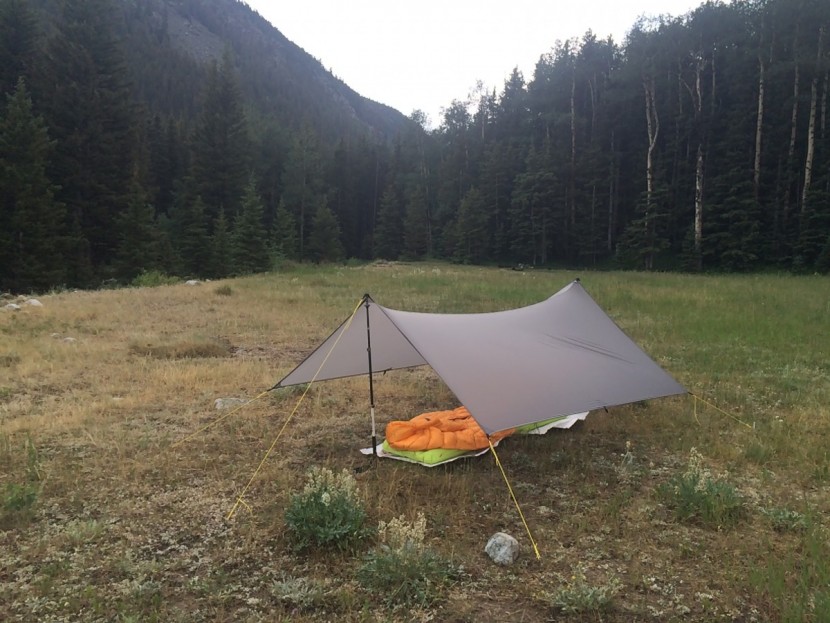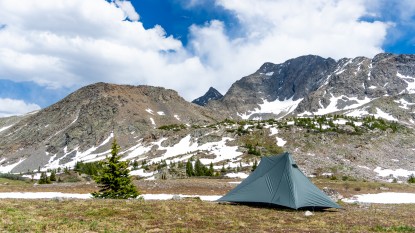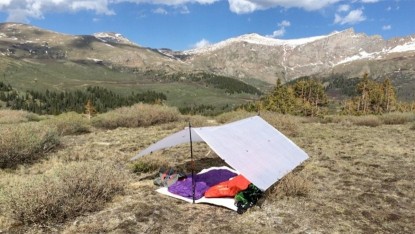Mountain Laurel Designs Grace Tarp Duo Review

Our Verdict
Our Analysis and Test Results
We have tested the Mountain Laurel Designs Grace Tarp Duo many times, and no matter who uses it or in what conditions, it is still a tarp that we come back to with fondness. As a catenary cut tarp, it can only be set up in one way, A-frame mode, which is one of the simplest and most common methods of pitching a tarp anyway. This mode leaves two ends open, although it is common to have the feet end of the tarp significantly closer to the ground, offering more shelter than the head end. Regardless, these limitations cause it to rank lower than most in this review for weather protection and adaptability, two critical metrics for assessing the performance of an ultralight shelter, and thus its cumulative score was in the lower third of the review.
Livability
The Grace Tarp Duo is a LARGE A-frame tarp. The added coverage is important for comfort in high winds and downpours because it provides lots of space for two people and their gear, even when the tarp is pitched tight against the ground. Depending on the steepness of pitch, we had about four inches overhead at the peak for our 5'11'' testers when we pitched it low to the ground for maximum weather protection. That's a lot more headroom than most tarps would afford.
This tarp also has three plastic clips on the underside of the ceiling. An inner mesh tent with a bathtub floor can hang from these, or they can be used to rig up a clothesline, or for other gear storage. Without adding a modular inner tent, like the Serenity Bug Net Shelter, there is no bug protection or floor. And regardless, there will not be much privacy with it.
Weight
At a measly 15.1 ounces for the SilNylon version, this one of the lightest shelter in this review. If you want the lightest version of this tarp, then upgrading to the DCF. The SilNylon tarp itself weighs in at only 12.4oz, and the 40' of included 2.7mm guy line weighs only 2oz. It also comes in a silnylon stuff sack that is unfortunately far too large for the Duo, meaning that it fits easily, but could fit in a far smaller stuff sack that would be more efficient for packing. To complete the setup, you need to add two adjustable trekking poles (or buy the carbon fiber poles available from MLD) and eight stakes.
Weather Resistance
When it's storming, this tarp provides good enough weather protection in most backpacking environments. The two open ends can be a drawback though if you select an exposed campsite. We find that almost all established campsites are in well to moderately well-protected areas where an A-frame works great. Eight perimeter Line-Locks allow you to stake out and tension this A-frame securely. There are no field guy outs on this tarp; it would be nice to have mid-field guy outs on the sides. SilNylon stretches when wet, but having the adjustability of the Line-Locks within reach from the inside allows you to tighten things up without going out in the rain.
The catenary cut makes it easy to pitch this tarp very tight to resist the wind. The ability to set it up low against the ground, while still having headroom to sit, is a significant advantage in foul weather compared to smaller tents that don't allow as much headroom. In exposed sites, it can be essential to pitch one end of the tarp near a rock or bush that blocks the wind. Alternately, you can block the opening with your backpacks and partially cover the head end with a rain jacket. If you are sure you are going to face bad weather, or for the highest protection and safety for long journeys, pairing this with a lightweight, water-resistant bivy sack is a good idea.
Adaptability
A-frame tarps offer an advantage over traditional tents and pyramid shelters in that the pitch can adjust in both height and width. If a campsite is narrow, you can bring the walls in and pitch it tight against the ground. Raise it and spread it out for more headroom and coverage if you don't anticipate any wind. However, flat tarps are much more versatile because their pitching configurations are limited only by your imagination. It is a great tarp for most backpacking environments.
Ease of Set-up
The Grace Tarp Duo, due to its generous catenary cut at the ridgeline, is the easiest to set up A-frame tarp that we have tested. Our first pitch in the backyard took about four minutes with adjustable trekking poles. Four minutes is a good set-up time for one person, and two can do it faster. Forty feet of cord for staking and guying outcomes with the tent, but it must be cut and added to the Line-Locks, preferably before you are out in the field. We found set-up using trekking poles quicker than pitches where the ridgelines secure to trees.
One feature that adds to the simplicity of set up are grommets sewn into the tabs at each end of the ridge crest, which easily takes the tip of our adjustable trekking poles (they are also designed to accept the end of carbon fiber poles). This detail made for a faster and simpler method of rigging poles than needing to tie clove hitches.
Value
At a low cost for the Duo size, this is a super affordable tarp shelter. We think the quality of materials used and the construction is excellent, so of course, we think this shelter presents a great value.
Conclusion
The Mountain Laurel Designs Grace Tarp is a huge, catenary cut shaped tarp that comes in either SilNylon (cheaper) or DCF (more expensive) versions. While it doesn't provide the same level of weather resistance as a pyramid or dedicated pole tents, it still offers generous coverage for a tarp, and set up in sheltered places will easily protect the user in all but the windiest rainstorms. It is the most affordable shelter in this review, presenting a great value, and is also quite easy to set up for a tarp. If lightweight and affordability are primary concerns, we encourage you to check out this high-quality option.


